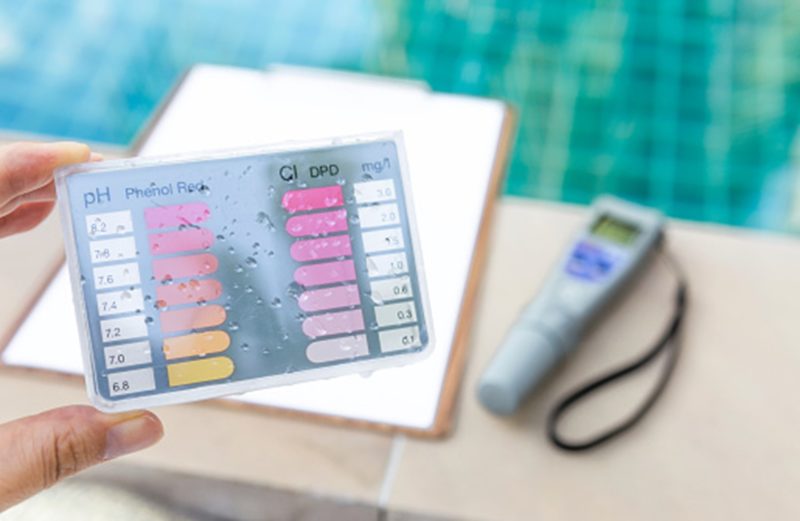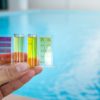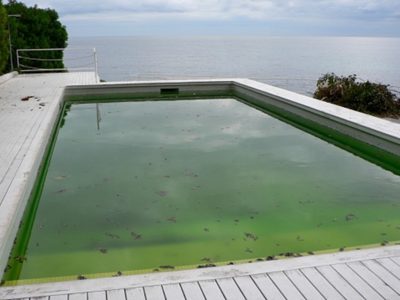Are swimming pool test strips accurate? Having a swimming pool can be all fun and games until it isn’t. Swimming pools tend to make their water pH levels fluctuate, and before you know it, you can end up with burnt skin or worse! This is where swimming pool test strips and pH water tests come into play. But are these test strips accurate? You’re about to find out!

Swimming pool test strips have been around as long as once can remember. They are cheap and yield significant results when it comes to the testing pool water. However, some people believe that swimming pool test strips are not accurate and might mislead you into thinking that the water chemistry is alright inside your swimming pool when in reality, it’s not.
The authenticity of these claims is debatable. However, if there’s even a 1% of this being the truth, we must know what goes around when you use test strips to analyze the properties of your swimming pool water properties.

What are swimming pool test strips?
To analyze water chemistry, pool owners often rely on test strips. Test strips are reasonably simple to use and provide accurate results swiftly.
Pool test strips provide a quick and accurate way to test the water in your pool. All you need to do is choose a test strip product that is suitable for your water type, whether it is a chlorine or bromine pool, a salt pool, or a spa. Simply immerse one test strip at elbow depth in pool or spa water and remove it immediately. And there you have it – fresh results dissecting the water in your swimming pool.
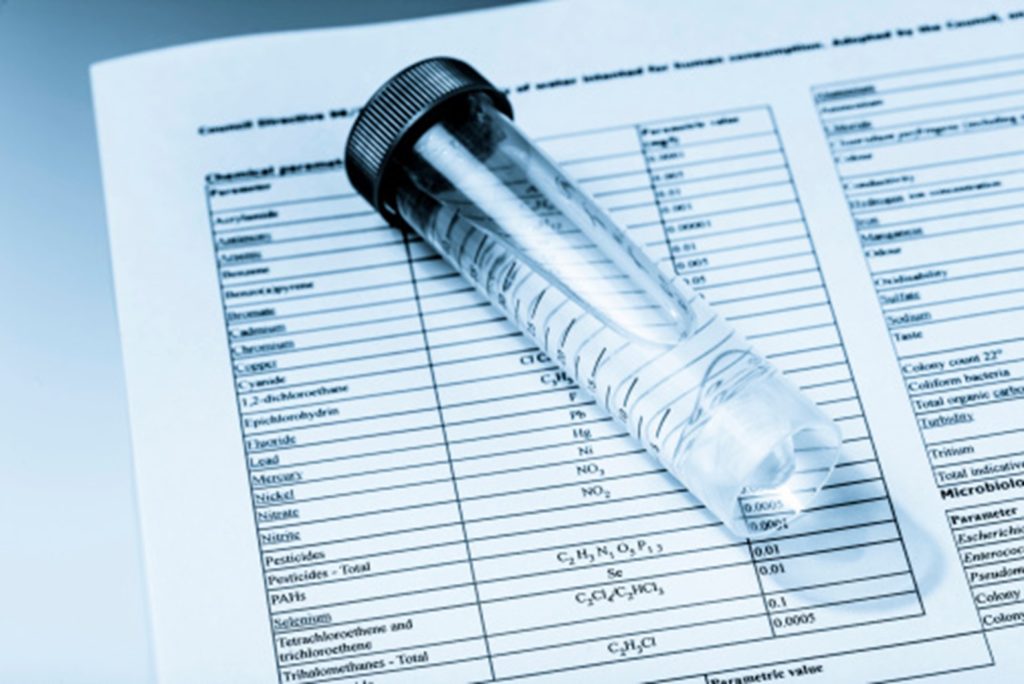
Benefits of using swimming pool test strips
Pool water test strips, as previously said, are inexpensive, rapid, and effective. A pack of 50 will cost you less than $10. However, just because they are cheap does not imply that they are useless.
Some claim they are more accurate than liquid test kits. The strips are straightforward to use, and as long as you can distinguish between colors and have good eyesight (or at least reading glasses), they’re pretty easy to see.
The kit includes a color chart to compare to the strip you dipped in your water sample. This will inform you what levels in your pool water, if any, need to be adjusted. Most strips will test for many items at once. To sum it up, pool test strips are:
- Very accurate if one knows how to use them properly.
- It doesn’t involve any rocket science – just dip the strips in your pool water for 10 seconds and then compare the color that just popped up with the legend that comes with the strips.
- Versatile. You can test for multiple chemical compositions in your pool water. This includes chlorine, total alkalinity, pH levels, stabilizers, phosphates, and the hardness of your pool water.
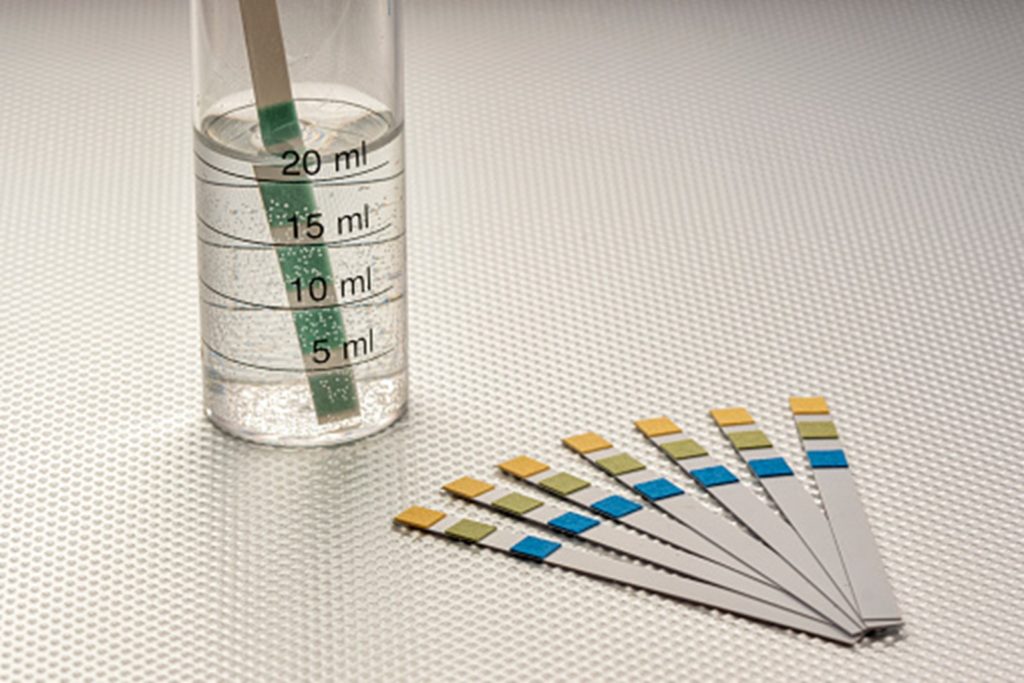
Cons of using swimming pool test strips to analyze your pool water
Like every other method of water testing, swimming pool test strips are not without their disadvantages. These setbacks include:
- If not used for a long time, test strips can expire.
- People have their doubts about its accuracy and would prefer taking a pool water sample to a lab.
- It can easily get contaminated if exposed; this can skew the readings. To make sure your swimming pool test strips are not contaminated, make sure the strips are sealed at all times.
Are swimming pool test strips accurate?
Swimming pool test strips are generally reliable. Unfortunately, when these strips are utilized in varied settings, they might read differently or inaccurately. This can even include the settings it passed through on its way to your store.
The testing procedure may be changed if the kits are frozen. This also applies to testing strips that have been exposed to a hot or humid environment. As a result, some experts advise that the test strips be examined on their own. This can be accomplished by subjecting them to a predetermined amount of chlorine, pH, or alkalinity. This allows the user to determine if the strips are correct or slightly off.
If you, as a pool owner, notice that the test strips are giving you entirely different readings despite the fact that they are from the same kit, you should get that kit checked.
Tips to get accurate readings from swimming pool water test strips
To get a precise reading, you must:
- Buy your test strips from a reputable brand.
- Check the expiry date of the test strips before using them.
- Keep them in a safe and secured place before using. They shouldn’t be in contact with any moisture or touch before using.
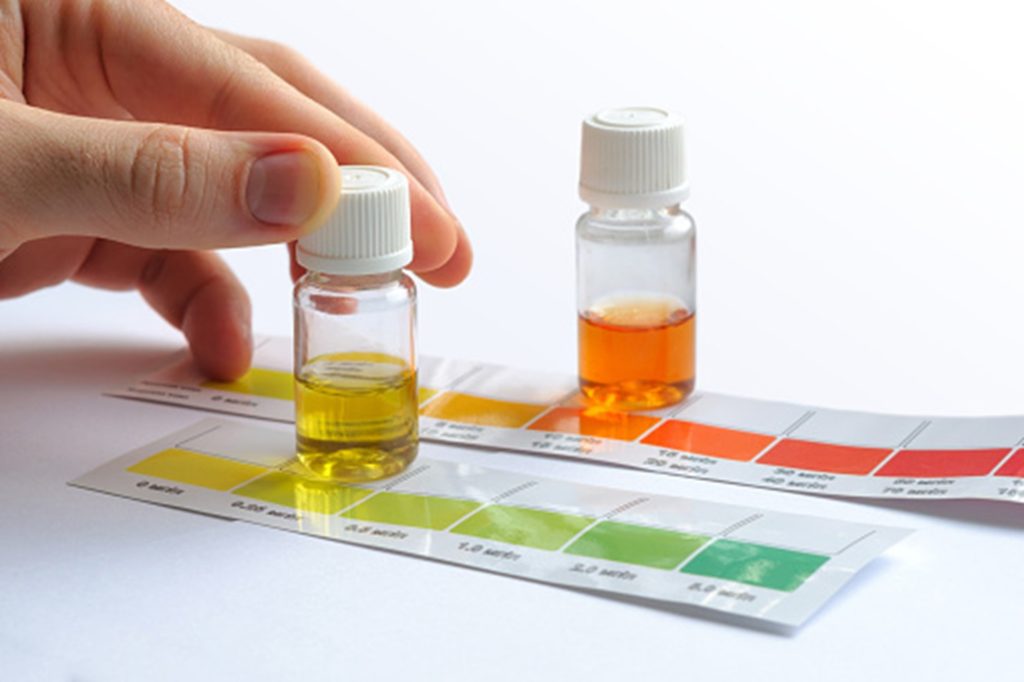
Using pool test strips
Using pool test strips to test your swimming pool water is no rocket science. It’s a fairly straightforward procedure and isn’t time-consuming either. Just follow the steps mentioned below, and you’re good to go!
- Take out a strip from the water test kit you just bought and dip it in your pool water for about 5 seconds.
- Pull back the strip and wait for 15 seconds or until you see a distinguished shade on the test strip.
- Compare the shade you see on the test strips with the chart that came with your test strips.
- Once you’ve compared the results, you’ll get to know which chemical is in excess or shortage in your pool water. Once you’ve added that specific chemical compound, you’re done for the day!
Do I need to test the water in my swimming pool?
The short answer to this question is YES. If you want a pristine and well-balanced pool, you need to make sure that your pool water is fit for recreational activities.
We advise you to test your pool water once every week; it should be part of your swimming pool maintenance plan. It is not rocket science to test your pool water and maintain perfect chemical harmony, but it does need regularity and consistency on your side.
pH and chlorine levels should be measured more frequently, maybe on a daily basis, until you have a clear grasp of how they change. Other values, such as calcium, alkalinity, and cyanuric acid, change more slowly and, in certain circumstances, can be checked weekly or even monthly.
For ideal swimming pool water properties:
- The pH levels should be between 7.2 and 7.6.
- Alkalinity should be between 80 and 120 ppm.
- Calcium hardness should be in the range of 180 and 220 ppm.
- Chlorine should be between 1 and 3 ppm.
- Bromine should be between 3 and 5 ppm.
- Cyanuric acid should be between 30 to 50 ppm.
If the water chemistry is outside the above-mentioned ranges, you’d need to invest time and effort to bring balance to your swimming pool water.

Other ways of testing the water chemistry of your swimming pool water
If you’re in harmony with using swimming pool test strips for your water test, you can use some of the following options to do the same.
Liquid Test Strips
Liquid test kits are an excellent method to evaluate chemical levels in your pool and ensure that it always has crystal clear water. Although more expensive than testing strips, liquid kits provide a more reliable and comprehensive testing option.
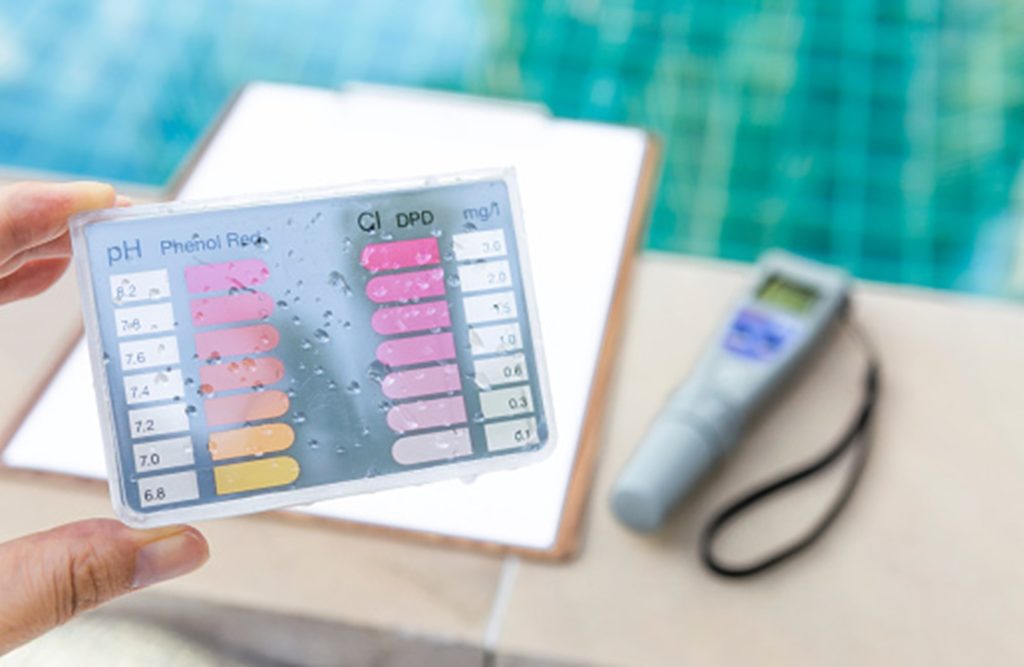
Digital Pool Testers
Digital pool testers use electrodes to monitor chemical levels in the water, resulting in more accurate and consistent readings. Although more expensive, digital water testers are unquestionably some people’s favorites because of their dependable, comprehensive, and quick water testing option.
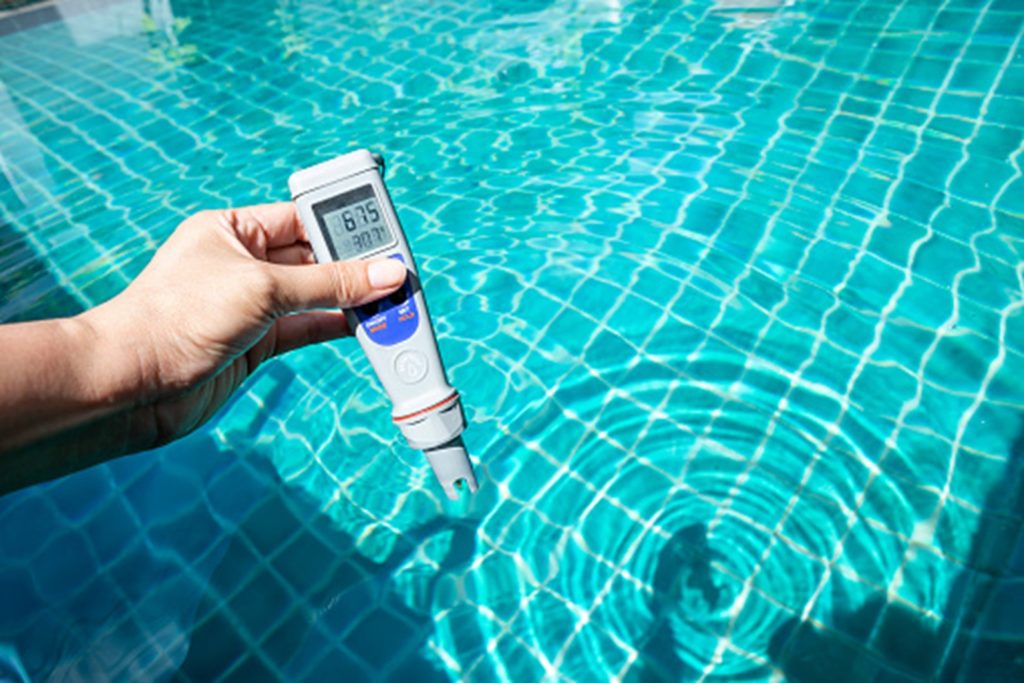
Pool test kits or pool test strips?
Pool test kits, according to many individuals, give more reliable findings than pool test strips. However, this is not always the case. Pool test kits might provide skewed results if the tester adds an extra drop of reagent or shakes the vial too forcefully.
The test kit’s results will provide you with precise readings on your pool water if completed correctly. The colored water is simpler to visually correlate with the legend than the test strips’ tiny colored patches. However, testing using a kit will take up considerably more of your time and will necessitate your full attention.
Pool test kits are initially more expensive, but the reagents will last the entire summer without needing to be replaced. Despite the fact that reagents have a lengthy shelf life, it is suggested that you buy new reagents at the start of each new pool season.
Pool test kits with more testing choices, such as total hardness or cyanuric acid, are significantly more expensive than strips with the same capacity. If you prefer to test your pool using a test kit and are comfortable with all of the processes involved, it is an efficient method to evaluate your pool’s chemistry. If you are new to pool testing, pool test strips are generally the better option.
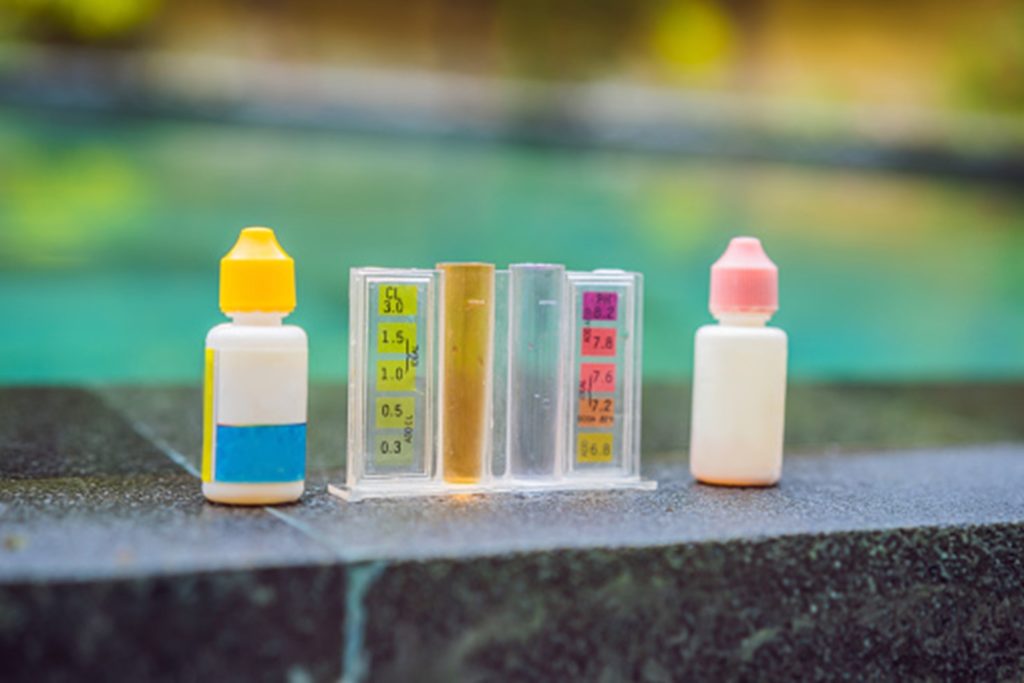
Liquid kits or strip tests?
According to some people, liquid kids provide far more dependable results than their counterparts – swimming pool test strips. However, when appropriately used, test strips can provide just accurate results when it comes to dissecting your pool water.
Moreover, test strips are by far an easier option than liquid test kits since you’d need to check your pool water once every two or three days; we’d recommend using test strips because they are comparatively easier on your pocket.
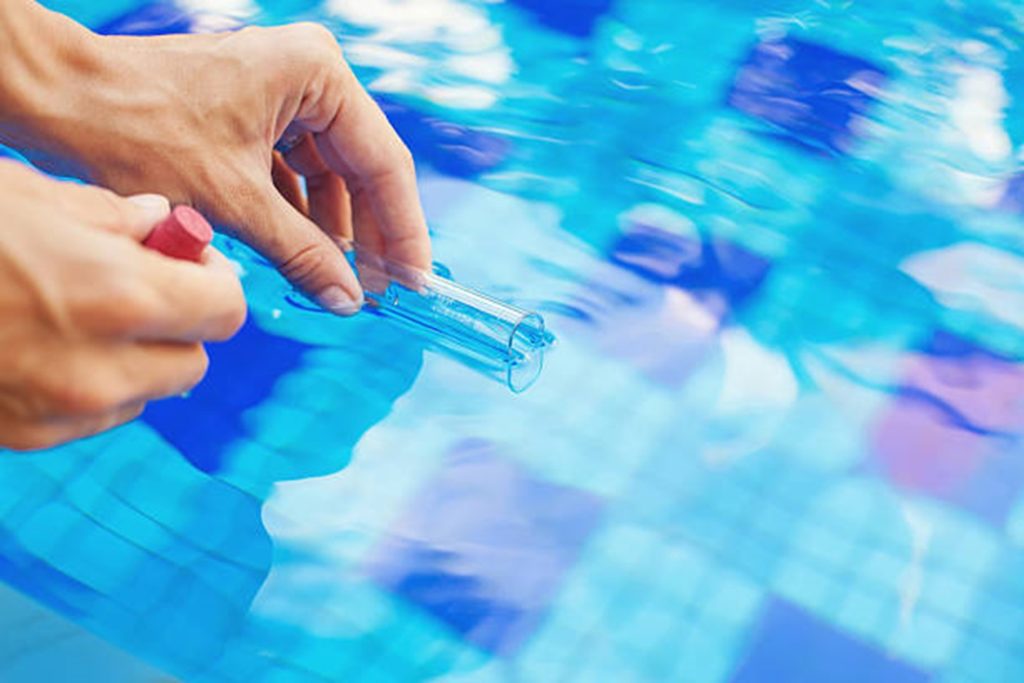
Ending Note
Swimming pool test strips are a great way to analyze and evaluate the chemical composition of your swimming pool. Contrary to popular belief, they provide accurate results if used properly. Moreover, they are the cheapest water test option available, so there’s that.
If you haven’t tried out using water strips to test your pool water, now’s the time to do so. You won’t regret your decision. Happy testing!
FAQs
Can pool test strips be wrong?
A filthy test vial or optical chamber or contaminating the solution with an oily finger can all ruin a test. Air and humidity can degrade reagents and replace dropper-bottle lids or moist fingers, causing the reagent pads on a test strip to respond prematurely.
What does free chlorine mean on the test strip?
The quantity of chlorine that has yet to mix with chlorinated water to sterilize pollutants properly is referred to as free chlorine, which implies that this chlorine is free to eliminate dangerous bacteria in the water of your swimming pool.
How do you tell if a pool is properly chlorinated?
Immerse your hands in the water. If the water feels greasy or sticky to the touch, this indicates that the chlorine is not working. It’s reasonable to assume that the pool water is infested with bacteria and in desperate need of a shock.
How do I test my pool for chlorine without a kit?
Strip testing is a quick and straightforward way to determine the pH of your pool’s water. Simply dip a pH strip tester into your pool’s water and compare the color it changes to a chart. Most pH testing strips include a chart to help you calculate the pH of your pool.
Is it OK to swim in a cloudy pool?
Yes, for the most part. It can be unsightly and should be handled, but swimming in murky water is often safe. The only exception will be if the pool is hazy due to an excess of chemicals. Swimming in this pool water would be dangerous and should be avoided.
Does too much chlorine make the pool cloudy?
Excessive amounts of pool chemicals might produce cloudiness in your water. Common reasons include high pH, high alkalinity, excessive chlorine or other sanitizers, and high calcium hardness.
What happens if free chlorine is low?
When the chlorine level is plummeting, microorganisms such as bacteria can proliferate more quickly. With dangerous germs like e-coli, this will soon lead your pool to become unhealthy, putting swimmers at risk of becoming ill—Algae development. Algae will also proliferate rapidly.

